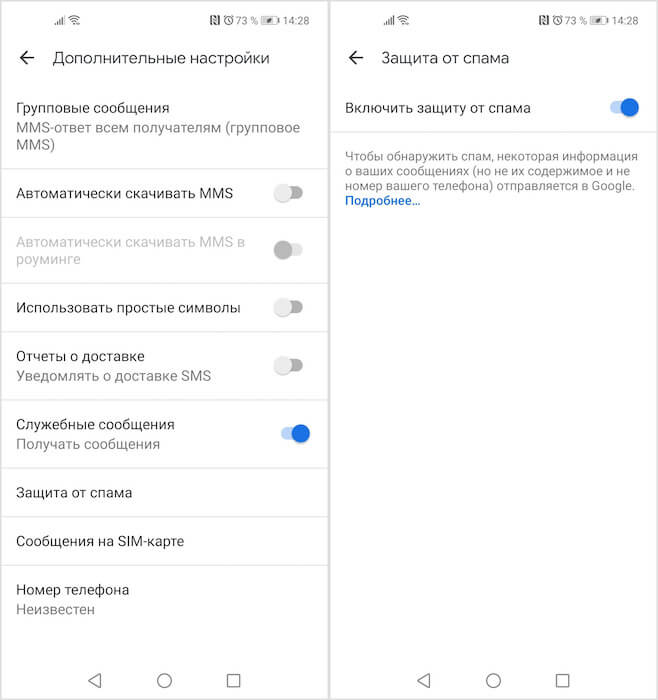Russia has quite strict laws on personal data, but this does not prevent domestic companies, which gain access to information about their customers, from merging it to the side. Bans, fines and other sanctions do not scare them too much, because the contact details of a solvent person can cost a lot of money, especially since companies usually have a lot of this stuff. This is how spam is born when people from organizations that do not interest you begin to call you and offer to take out a loan, buy something or start investing with them. Fortunately, all of this can be saved.

'Messages' for Android learned how to fight spam
Late last year, Google introduced an anti-spam engine for the Messages app. Many manufacturers from the factory pre-install it on branded smartphones, and therefore the news about the appearance of protective tools that can get rid of unwanted messages was warmly received by the widest audience. However, it became known very quickly that the new mechanism would work only in several countries of the world, among which Russia was traditionally not included. However, this week the company released a 'Messaging' update with a welcome change that wasn't originally promised.
How to block spam in the Messages app
- To activate anti-spam protection, launch the 'Message' application and go to the context menu;
- Open the 'Settings' section and from there go to the 'Additional settings' tab;

Spam protection works independently of telecom operators
- Scroll down the list of available options and select the 'Anti-spam' item;
- In the window that opens, opposite the 'Enable spam protection' line, move the enable toggle switch to the active position.
Since the anti-spam mechanism works completely independently from the operators and does not receive any information from them, Google has to process the entire data array to calculate spammers on its own. According to the developers, the application recognizes spam in real time. This allows you to instantly identify an unscrupulous interlocutor, even if spam content comes from a user with whom you previously communicated. Thus, you can protect yourself not only from mass mailings, but also from targeted mailings, for example, if the sender has been hacked.
How spam protection works
The mechanism in question, although it works autonomously, still requires the direct participation of the user. As soon as the application recognizes the signs of spam content, it will prompt you to check and confirm if this is actually the case. If a message was sent by a user you don't know, you will need to confirm that it is spam, and in the future all messages from this number will be blocked. Otherwise, it is enough to reject the offer to classify the sender as spammers.
I think it's easy to guess that spammers are calculated by analyzing the content of messages and sender numbers that are sent to Google's servers. True, the company guarantees that it does not collect personal information, since it primarily focuses on processing messages from numbers that are not stored in the recipient's phone. But this means that Google gets access not only to messages, but also to the address book. After all, she somehow needs to understand that a specific number is not in the contact list. However, most likely, all the data that the search giant analyzes is subject to hashing, and therefore a living Google employee can no longer read it.
